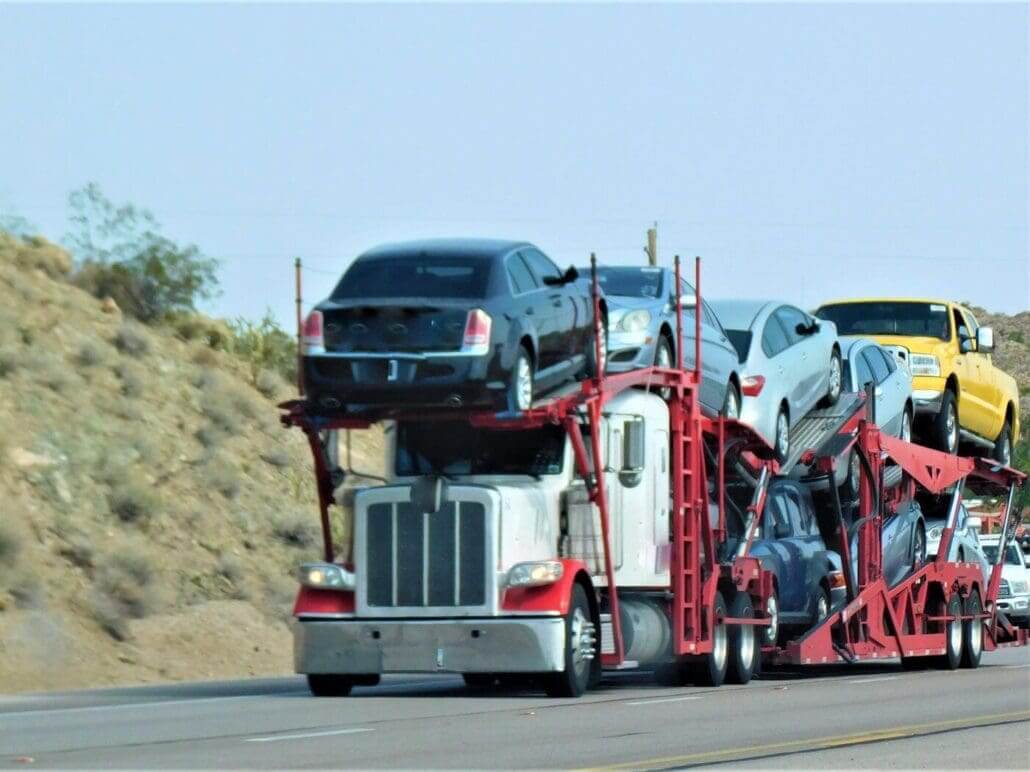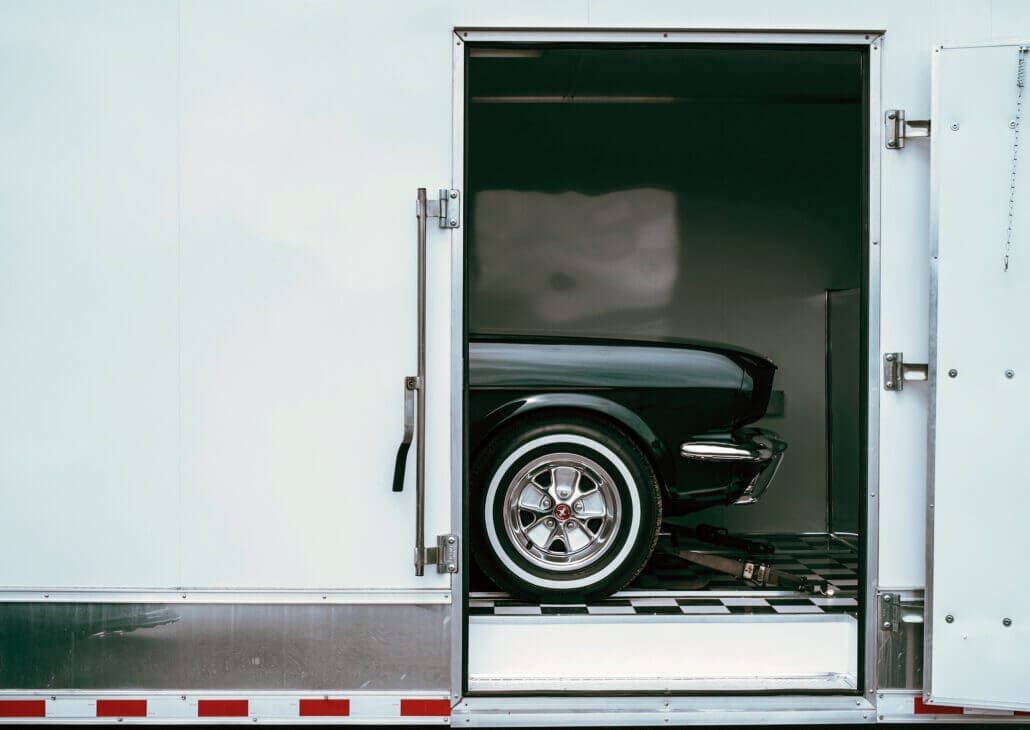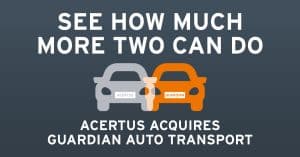Booking your car’s transportation service is not as easy as it seems. When choosing between open vs enclosed car shipping, there are many factors that you’ll have to consider, and there is a chance that you’ll be overwhelmed by it.
You must choose the appropriate shipping method after careful consideration since both open and enclosed car shipping provide different levels of safety for your car. In this blog, we’ll help you with all the necessary information so that you can make a better-informed decision.
Why is it Important to Choose the Right Car Shipping Method?
The first thing you’d want for your car is to have its safety intact. Your vehicle isn’t merely a possession but often holds a sentimental value for you. Also, the huge difference in the cost of open vs enclosed car transport makes it inevitable to research and outweigh your options thoroughly before making your decision.
The decision between open vs. enclosed car transport affects your car’s condition, safety, and peace of mind. You’re safeguarding it from potential damage by selecting the appropriate method based on your vehicle’s type, value, and personal preferences.
The importance of this decision cannot be overstated—it is not just about the costs you incur but about the essence of your vehicle and its value, making every mile of its journey a worry-free experience for you. So make sure you choose the right method for your car shipping.
Open vs. Enclosed Auto Transport
By now, we know that the decision between open vs. closed car shipping is important for your car. Each method has various advantages and disadvantages that impact your vehicle’s journey.
Open shipping offers affordability and convenience, while enclosed shipping prioritizes protection and security.
At ACERTUS, we help you decide the right method to choose for the shipment of your car. If the question of shipping your car across the country is bothering you, let us take care of it with our expert services.
Before we go into understanding more about the benefits and costs of each, let’s first understand the fundamental concept of open and enclosed car transport.
What is Open Car Shipping?

Open car shipping involves transporting vehicles on an open carrier, making it a popular and cost-effective choice. In this method, multiple vehicles are usually loaded together on an open carrier. As the name suggests, given it’s open, vehicles are exposed to various weather conditions and road elements during transit.
This method is well-suited for common vehicles and shorter distances, offering convenience and quicker booking times. While it’s a budget-friendly option, it’s important to consider the potential wear and tear due to exposure to the outer elements.
What is Enclosed Car Shipping?
Enclosed car shipping is a method of shipping your car from one place to another in an enclosed carrier. Enclosed car shipping is used when you have a premium car, weather conditions are harsh, or the distance is too long and you don’t want to take a chance.
Since vehicles are transported in an enclosed carrier, it helps shield and protect your car from external elements like dust and dirt, road debris, rain, snow or hail damage. If you have a luxury, high-value, classic, collectible car, then this is the option you should go ahead with.
Given its high security, enclosed car shipping comes at a higher cost.
Pros and Cons of Open Car Shipping
Let’s dive deeper into understanding it so that you can make a better-informed decision for your next car shipment.
Pros
Cost-Effectiveness
Open car shipping is notably more budget-friendly than enclosed shipping. This affordability is particularly appealing if you’re looking to transport your vehicle without specific demands.
Availability
Open carriers are more common and widely used in the industry. So if you go and book an open carrier for your car shipment on short notice, there’s a chance you’d not be disappointed and get your booking.
Cons
Exposure to Elements
One of the primary drawbacks of open car shipping is the exposure to various external elements during transit. During the transit, your vehicle will be affected by weather conditions like rain, snow, hailstorms, and road debris.
Aesthetic Concerns
If you have a high-end or vintage vehicle, the exposure during open shipping might raise concerns about potential damage to the vehicle’s exterior.
Security Concerns
While theft during transit is rare, there’s a slightly higher risk associated with open shipping due to the exposure of vehicles.
Open car shipping offers an economical and efficient means of transporting your vehicle, particularly when it’s a standard vehicle being shipped in a relatively short distance.
However, the exposure to the elements and potential wear and tear should be carefully weighed against the cost savings. Before opting for open car shipping, you should assess your vehicle’s value, condition, and risk tolerance.
Pros and Cons of Enclosed Car Shipping:

When transporting your vehicle, enclosed car shipping offers premium protection and care. However, like any option, it comes with its advantages and disadvantages that you should consider. Here’s an in-depth look at the pros and cons of enclosed car shipping to help you make an informed decision.
Pros
Maximum Protection
Enclosed car shipping provides the highest level of protection for your vehicle. Your car is shielded from weather elements, road debris, and potential hazards, ensuring it arrives in the same condition it was loaded.
Specialized Transport
This method is ideal for luxury, high-value, classic, and collectibles. It caters to those who prioritize maintaining their vehicle’s pristine condition.
Climate Control
Some enclosed carriers offer climate-controlled environments, which can be crucial for transporting a vehicle sensitive to temperature fluctuations.
Reduced Risk of Damage
With the added protection of an enclosed carrier, the risk of minor wear and tear during transit is significantly minimized.
Added Security
Enclosed carriers provide an additional layer of security against potential theft and tampering during transit.
Cons:
Higher Cost
One of the most significant drawbacks of enclosed car shipping is the higher cost compared to open shipping. The enhanced protection and specialized service come with a higher cost.
Limited Availability
Enclosed carriers are less common in comparison to open carriers. This might result in longer booking lead times, especially during peak seasons.
Longer duration
Due to the complexity of loading and unloading the car in the enclosed carrier setting, it is possible that your overall shipping time is extended by a day or two.
In summary, enclosed car shipping is preferred for those who value maximum protection and transport high-value or delicate vehicles.
The premium cost justifies the heightened security, climate control options, and reduced risk of damage. However, the decision to opt for enclosed shipping should be influenced by factors such as your vehicle’s value, the significance of its condition, and your budget.
ACERTUS offers top-tier enclosed shipping services, ensuring your vehicle receives the utmost care and protection during its journey. If your vehicle holds substantial value or sentimental significance, the benefits of enclosed car shipping outweigh the drawbacks.
Let’s understand the primary difference between open and enclosed car shipping.
Some Key Differences between Open Car Shipping and Enclosed Car Shipping
If you’re in a hurry and want a crisp and clear comparison while making a decision, below are the important points of difference between open vs. enclosed car shipping that should help you understand it quickly.
| Open Car Shipping | Enclosed Car Shipping | |
| Cost | Lower Cost – Cheap and cost-effective option | Higher cost – Expensive option |
| Protection | Provides limited protection and is prone to bad weather conditions | Provides the highest level of protection shielding from weather conditions |
| Convenience | Easier to load and unload – increasing the convenience of the method | Takes longer and precise efforts in loading and unloading – decreasing the convenience |
| Availability | Easily available due to the simplicity of the process | Requires much-advanced planning due to the complex process |
| Capacity | Usually has more capacity to carry vehicles at a single time | Has limited capacity to carry vehicles at a single time |
Car Transport Open vs Enclosed. What is Better?

When choosing between open and enclosed car shipping, several crucial factors come into play. Making an informed decision requires careful consideration of your vehicle’s characteristics, external influences, and priorities. Let’s explore the key factors that should influence your choice.
Car Size and Dimensions
The size and dimensions of your vehicle play a significant role in determining the most suitable shipping method.
Due to space limitations, larger or custom vehicles might face challenges with open shipping. Enclosed carriers, on the other hand, are better equipped to handle vehicles with unique dimensions, ensuring a secure fit and safe transport.
Car Weight and Value
The weight and value of your vehicle are vital considerations. Higher-value or delicate vehicles are best suited for enclosed shipping, where the enhanced protection safeguards their condition.
Additionally, heavier vehicles might require specialized transport considerations such as protection from dust, road debris, and rain which enclosed shipping can provide.
Market Trends
Staying informed about current market trends in the car shipping industry can impact your decision. Factors such as demand and seasonal fluctuations can affect availability and pricing. Open carriers might fill up quickly during peak seasons, making planning necessary.
Weather Conditions
Weather conditions along the shipping route are a significant external influence. While transporting valuable and delicate vehicles, enclosed shipping helps protect your vehicle from snow, hail, rain, and other weather conditions.
While open car shipping provides a cost-effective solution for standard vehicles and shorter distances, enclosed shipping can be your go-to method for if you’re seeking protection for your high-value, luxury, or premium vehicle.
However, you must evaluate your vehicle’s dimensions, weight, value, market trends, and weather conditions while making a decision. This helps you ensure the safe and secure journey of your vehicle.
Cost Comparison
When it comes to car shipping, cost is a significant factor that influences the decision of open vs enclosed car shipping. Open and enclosed car shipping methods come with different price points, and understanding the cost implications of each option is essential.
Below is the approximate cost comparison of open vs enclosed car shipping.
| Distance (in miles) | Open Car Shipping Cost | Enclosed Car Shipping Cost |
| 0-100 | $236 | $400-$600 |
| 101-300 | $465 | $700-$1000 |
| 301-500 | $632 | $1200-$1500 |
| 501-800 | $912 | $1500 – $1700 |
| 801+ | $1,256 | $1700-$2000 |
There are also other factors that affect the cost of open vs enclosed car shipping. Let’s understand them quickly.
Factors Affecting the Cost of Open vs Enclosed Car Transport:
Several variables can impact the cost of both open and enclosed car shipping:
Distance
Longer distances generally result in higher shipping costs due to fuel, labor, and operational expenses.
Vehicle Type and Size
The dimensions, weight, and type of vehicle being transported can influence the cost. Larger or heavier vehicles might incur higher fees since it occupy more space and require more effort in loading and unloading.
Additional Services
Expedited shipping, door-to-door delivery, and insurance coverage are extra services that can contribute to the overall cost.
Seasonal Fluctuations
Demand for car shipping can vary by season, affecting pricing. Peak seasons might see higher prices due to increased demand.
Conclusion
In conclusion, understanding the difference between open vs enclosed car shipping is essential for making informed decisions when transporting your vehicle. While open car shipping offers cost-effectiveness and efficiency, it exposes your vehicle to potential weather and road debris.
On the other hand, enclosed car shipping provides an extra layer of protection against external elements, making it ideal for luxury or classic vehicles, albeit at a higher cost. Your choice ultimately hinges on factors like budget, the value of your vehicle, and your risk tolerance.
By weighing the advantages and drawbacks of each option, you can confidently select the car shipping method that aligns with your needs and ensures a smooth journey for your prized vehicle.





